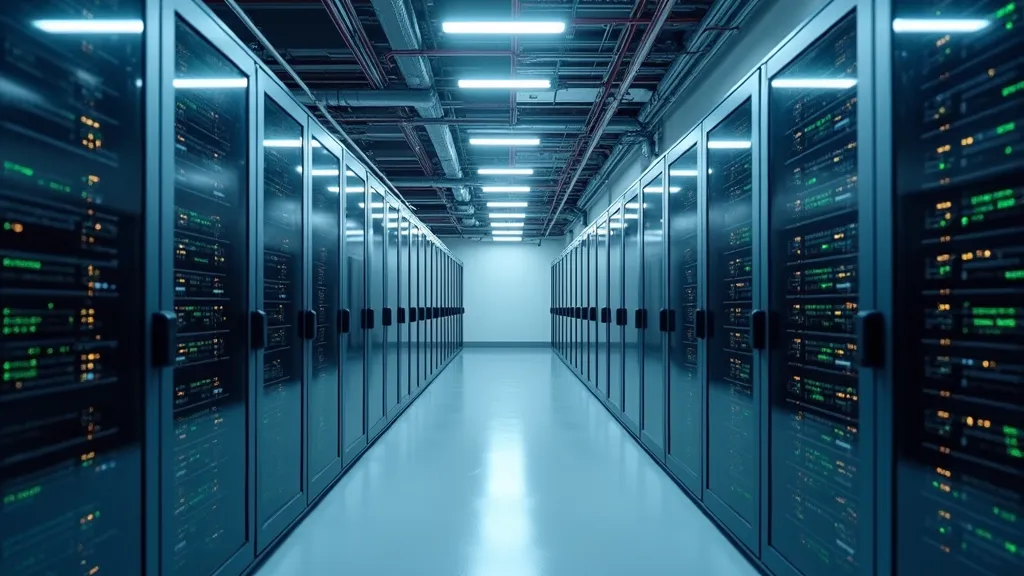Green IT: Sustainable Practices in Data Centers and Cloud Computing
In recent years, the IT industry has been under increasing pressure to reduce its environmental impact. With data centers consuming vast amounts of energy and contributing significantly to carbon emissions, the concept of “Green IT” has emerged as a crucial approach to creating more sustainable technology infrastructure and operations.
Understanding Green IT

Green IT refers to environmentally sustainable computing and IT practices. It involves designing, manufacturing, using, and disposing of computers, servers, and associated subsystems efficiently and effectively with minimal or no impact on the environment.
The Importance of Green IT in Data Centers and Cloud Computing
Data centers are the backbone of our digital world, housing the servers that power everything from email to streaming services. However, they are also significant energy consumers and, consequently, major contributors to carbon emissions. As cloud computing continues to grow, the environmental impact of these facilities becomes increasingly critical.
Key Sustainable Practices
1. Energy Efficiency
One of the primary goals of Green IT is to reduce energy consumption. This can be achieved through various methods:
- Upgrading to energy-efficient hardware: Modern servers and networking equipment are designed to be more energy-efficient.
- Implementing virtualization: This allows multiple virtual servers to run on a single physical machine, reducing overall hardware requirements.
- Optimizing cooling systems: Advanced cooling techniques like liquid cooling or free air cooling can significantly reduce energy consumption.
2. Renewable Energy Sources
 Many data centers are transitioning to renewable energy sources:
Many data centers are transitioning to renewable energy sources:
- Solar and wind power: Installing on-site renewable energy generation or purchasing renewable energy credits.
- Hydrogen fuel cells: Some companies are experimenting with hydrogen as a clean energy source for data centers.
3. Waste Reduction and Recycling
Proper disposal and recycling of IT equipment is crucial:
- E-waste management programs: Implementing comprehensive recycling programs for outdated or broken equipment.
- Extending hardware lifecycle: Through proper maintenance and upgrades, the lifespan of IT equipment can be extended.
4. Water Conservation
Data centers often use significant amounts of water for cooling:
- Water-efficient cooling systems: Implementing technologies that reduce water usage or recycle water.
- Dry cooling techniques: Using air instead of water for cooling in suitable climates.
5. Green Cloud Computing
Cloud providers are implementing various green practices:
- Efficient resource allocation: Optimizing server utilization to reduce energy waste.
- Green data center design: Building data centers with sustainability in mind from the ground up.
Challenges and Solutions
Challenge 1: High Initial Costs
Implementing green technologies often requires significant upfront investment.
Solution:
- Long-term cost-benefit analysis to demonstrate ROI
- Government incentives and tax breaks for green initiatives
- Phased implementation to spread costs over time
Challenge 2: Legacy Infrastructure
Many organizations are saddled with older, less efficient infrastructure.
Solution:
- Gradual migration to more efficient systems
- Hybrid approaches combining old and new technologies
- Virtualization to improve efficiency of existing hardware
Challenge 3: Lack of Standardization
There’s no universal standard for measuring and implementing green IT practices.
Solution:
- Industry collaborations to develop common standards
- Adoption of recognized certifications like LEED for data centers
- Regular audits and reporting on environmental impact
Challenge 4: Balancing Performance and Sustainability
There’s often a perceived trade-off between performance and energy efficiency.
Solution:
- Investing in research and development of high-performance, energy-efficient technologies
- Implementing smart load balancing and workload optimization
- Educating stakeholders on the long-term benefits of sustainable practices
Challenge 5: Data Growth and Energy Demand
The exponential growth of data threatens to outpace energy efficiency gains.
Solution:
- Implementing data lifecycle management to reduce unnecessary storage
- Utilizing AI and machine learning for more efficient data processing and storage
- Exploring emerging technologies like DNA data storage for long-term archiving
Conclusion
Green IT in data centers and cloud computing is not just an environmental imperative but also a business necessity. As energy costs rise and environmental regulations tighten, organizations that adopt sustainable IT practices will be better positioned for the future. While challenges exist, the solutions are within reach, and the benefits – both environmental and economic – are clear. The transition to Green IT is a journey that requires ongoing commitment, innovation, and collaboration across the industry.